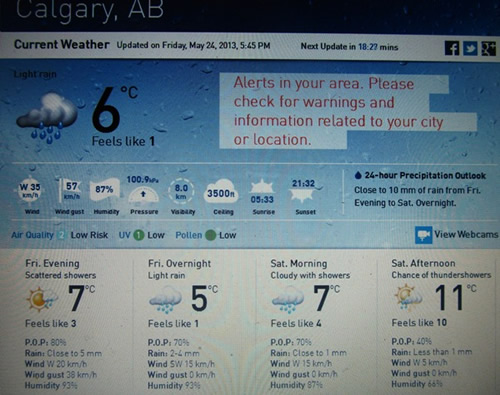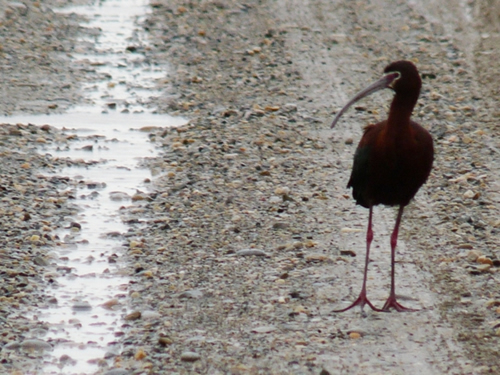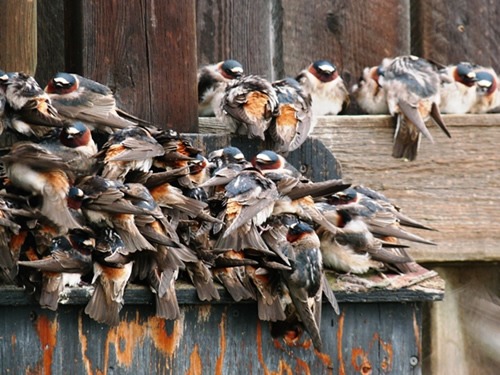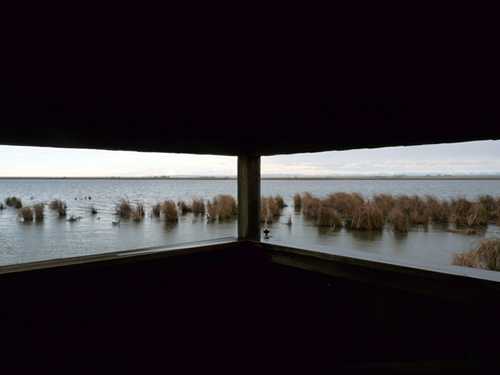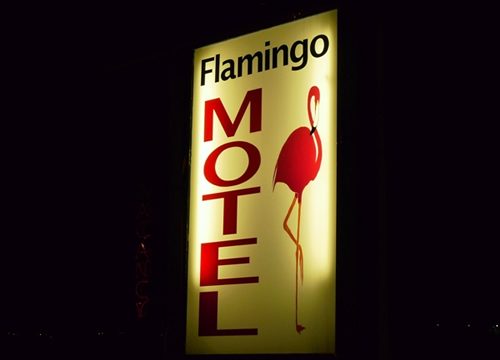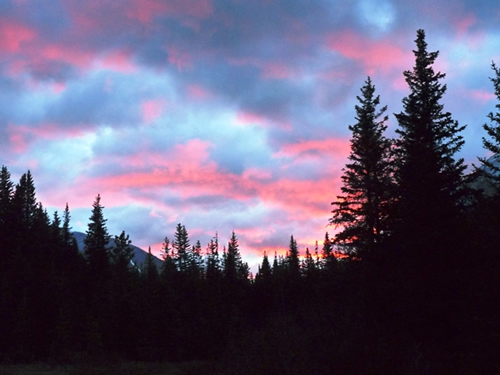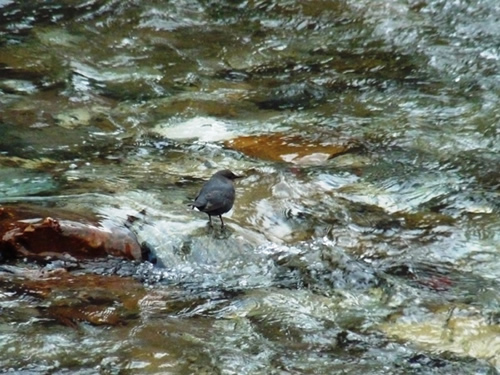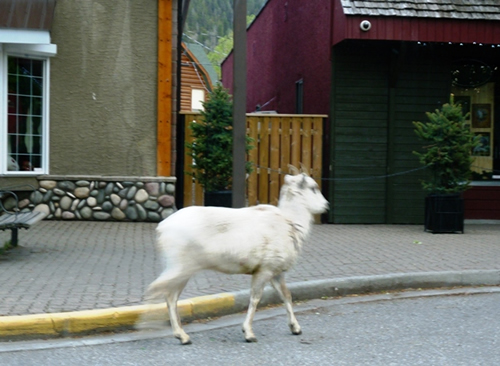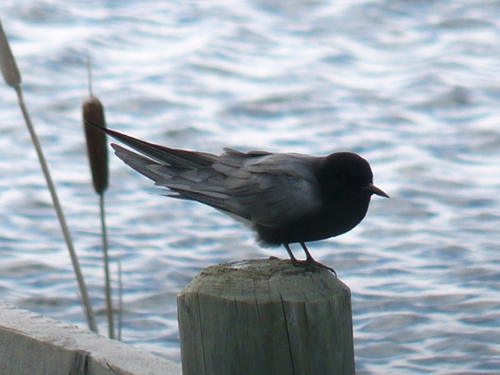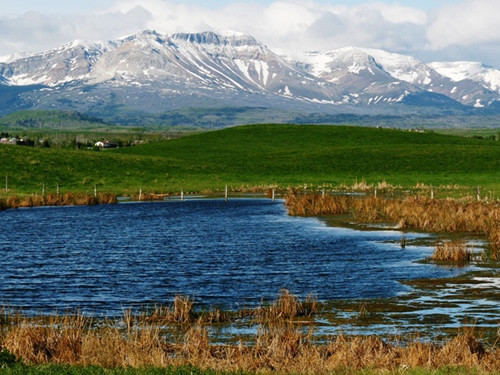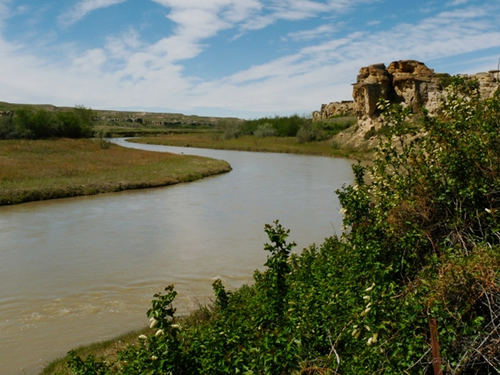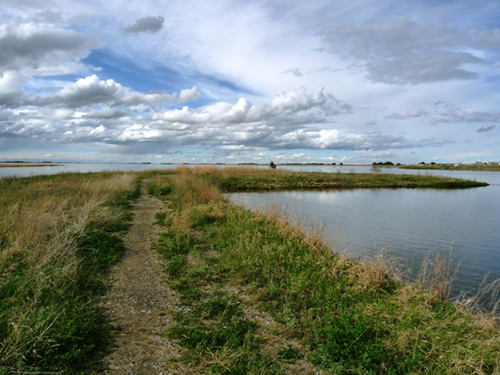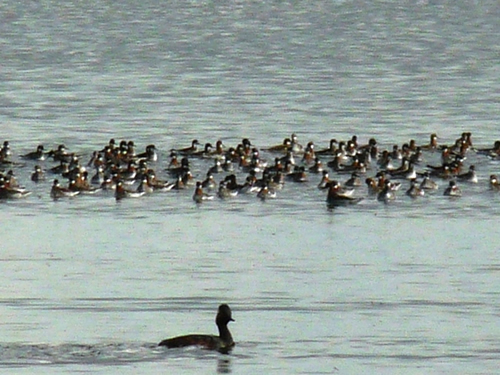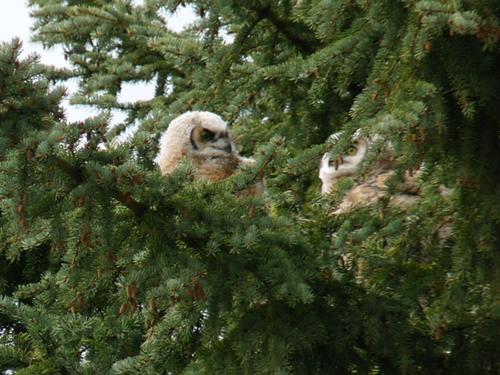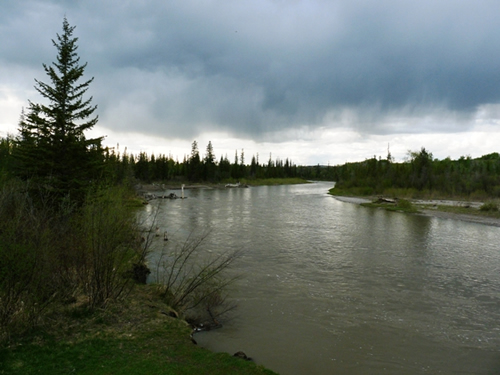|
MIGRATION RESEARCH FOUNDATION |
|||||||||||||||||||||||||||||||||||||||||||||||||||||||||||||||||||||||||||||||||||||||||||||||||||||||||||||||||||||||||||||||||||||||||||||||||||||||||||||||||||||||||||||||||||||||||||||||||||||||||||||||||||||||||||||||||||||||||||||||||||||||||||||||||||||||||||||||||||||||||||||||
This May was a particularly busy one for me, largely due to participating in a regulatory hearing as an expert witness on wildlife. Since that was the priority on my schedule, I wasn't sure when (or even if) I would be able to do my Birdathon this year. However, when a couple of Calgary birding friends invited me to join them for a Birdathon with a southern Alberta focus on the final Saturday in May, I figured I could find a way to fit that in. Part of me certainly would have been happy to just relax at home, but I'm glad that I did go, as in terms of species seen it turned out to be one of my most successful Birdathons ever. Read on for all the details...
This was my fourth time doing a Birdathon in Alberta. In 2007 I found 124 species on a route that stretched from Dinosaur Provincial Park near Drumheller to Brown-Lowery Park in the foothills. In 2008 I began farther east in Medicine Hat, focused on the Cypress Hills, and finished the day in Calgary, reaching a total of 136 species. Last year, restricting myself to a 100 km radius around Calgary, my total dropped back a bit to 126. Most years, I've started my Birdathon around dawn (or earlier) and continued until sunset (or later). However, the Birdathon "rules" allow it to be held within any 24-hour period in May, and this time it made more sense to start Friday evening, since my teammates both needed to be back home Saturday night.
Depite the somewhat gloomy forecast, we headed out to rendezvous at Frank Lake, east of High River. The recent rain had raised the water levels there, and that probably contributed to the odd sight I observed on my drive down toward the lookout blind - a flock of White-faced Ibis wandering along the road! The species has been increasing in numbers dramatically over the past decade, and has now become a regular summer resident at Frank Lake and many other wetlands in the region - but it remains an impressive bird to see.
While I waited for Nick and Yousif to arrive, I walked out to the blind at the edge of Frank Lake ... partly to scan the lake, but mostly to get out of the rain! After being cooped up in a stuffy, windowless room for most of the week, I was looking forward to spending time outside, but cold rain was quickly dampening my enthusiasm and I knew that we had a long day ahead. On the other hand, at least we can layer up and put on waterproof clothing - for the birds it isn't so easy.
While most of the swallows were piling together for warmth, the rain of course didn't bother the waterbirds in the same way. From the shelter of the blind, we were able to get a solid start on our list, including three species of tern (Forster's, Common, Black), a couple of grebes (Western, Eared), four gulls (Ring-billed, California, Bonaparte's, Franklin's), two herons (Great Blue and Black-crowned Night), a dozen waterfowl, and assorted others including Sora and Marsh Wren. Altogether, we left Frank Lake with a count in the low 40s.
In reviewing the weather, we could see that the forecast was better to our south, so we agreed that we'd aim to focus on Waterton Lakes National Park at first light and then work our way back east and north as the day progressed. We considered trying some owling at night and potentially sleeping in the car - but it was windy enough that we doubted we'd be able to hear anything, and we'd also all had long weeks, so we agreed that we'd catch a few hours of sleep in Cardston before making a pre-dawn drive over to the park.
Somewhat rested, we hit the road again around 3:30 am. As we entered the park, we could see that it was still very windy, and worried about how that would affect our ability to detect diurnal birds too. After a bit of debate over the relative merits of Red Rock Canyon and Cameron Lake, we opted to head down to the latter for the dawn chorus. Not surprisingly, our first bird of the morning was an American Robin, soon joined by several colleagues. By this point it was only 3 Celsius, still somewhat windy, and with periodic flurries - so we stayed in the car for a bit until it started to get light! During that period we heard a song that Nick described as somewhat "mushy" and had us all temporarily stumped. It turned out that the car muffled the song enough to confuse us - as soon as we stepped outside, we instantly recognized it as a Lincoln's Sparrow. In short order we also added Varied Thrush, Northern Waterthrush, Yellow-rumped Warbler, and White-crowned Sparrow. However, there was little on the lake itself other than Western Grebes, so we began to head back up the road.
Driving back toward the Waterton town site, we made a few brief strategic stops along the road, wherever habitat looked promising for target birds and/or the wind seemed a bit more subdued. We had great success with Fox Sparrows (at least 5 of them singing) and picked up both kinglets as well as a couple more warblers (Townsend's and Wilson's) and a distant Pacific Wren, but struck out on Red-breasted Nuthatch, Hermit Thrush, and MacGillivray's Warbler (among others). The wind was certainly proving a hindrance to our early morning results. Our final brief stop before descending into town yielded Warbling Vireo and Western Tanager.
It might seem peculiar at first to consider a town as a key stop on a Birdathon, but of course Waterton is more park than urban - and most residences are only seasonally occupied. Combine that with the presence of feeders, and it's clear why we quickly added many species to our list. At one yard along, we had 15 Steller's Jays (enough to make eBird question our count), 2 Blue Jays, a Rufous Hummingbird, both Mountain and Black-capped Chickadee, and the first of two large and noisy flocks of Pine Siskins. At another set of feeders we encountered the other Siskin flock, as well as 4 Cassin's Finches (a local specialty) and 3 Evening Grosbeaks (also tough to find elsewhere in southern Alberta).
We checked out the shoreline a bit, hoping for an oriole or grosbeak, but there was little action in the trees. However, a Bald Eagle passed by overhead, and we had a mixed flock of Tree and Violet-green Swallows. The lake was simply too choppy to scan effectively - and presumably any waterfowl would be seeking more sheltered areas anyway. Realizing the wind was limiting our chances of finding much else, we started to head toward the park exit. A quick peek at Linnet Lake yielded a Common Merganser and 5 Barrow's Goldeneye.
One more side trip was in order before leaving the park. The Hay Barn area provides good breeding habitat for a variety of deciduous and riparian-favouring species and is usually worth a quick visit. It was disappointingly quiet on the drive in, and we thought the wind had us beaten again, but then things took a turn for the better. A quick stroll to check out the creek yielded a glimpse of our only Solitary Sandpiper of the day, plus a pair of Canada Geese riding the current downstream at an incredible speed! The drive back out was also much more productive, with our only Gray Catbird, Black-headed Grosbeak, and Song Sparrow of the day, plus our first Yellow Warblers and Mountain Bluebirds.
A brief sidetrip to the Bison Paddocks produced nothing other than an interesting conversation about the nature of the Brewer's Sparrows reported to occur in the area (i.e. are they likely "true" Brewer's since they are in prairie habitat, or the Timberline variety since they are right up against the mountains and disjunct from the rest of the prairie population?). Since we saw none, we had no opportunity to put our thoughts to any test. We instead headed east to Mountain View, with our list already in the neighbourhood of 90 species for the trip.
The Bobolinks known to frequent the Mountain View area did not disappoint, but we weren't able to say the same about the Upland Sandpipers that we also know live there. We added Bank and Northern Rough-winged Swallows over one pond, bringing our swallow count to six (missing only the ever-elusive Purple Martin, which we never did find). A quick stop in a (failed) attempt to score some breakfast at least yielded our only House Finch of the day, plus House Sparrow and Common Grackle.
After grabbing some breakfast to go in Cardston, we started eastbound on more than 100 km worth of Hwy 501 to get us to Milk River. None of us had driven this road before, and we were all pleasantly surprised. Much of the highway parallels the border just a few kilometres north of Montana, and the extensive rolling prairie was broken by cultivation in relatively few areas. We had an incredible three Golden Eagles along this stretch, including one sinisterly studying a newborn Pronghorn from quite close quarters (to the distress of the mother, of course). After a couple of unfruitful attempts, a nest check finally gave us Ferruginous Hawk; adding the Swainson's and Red-tailed Hawks and Osprey earlier along the highway, we were up to 8 raptor species by mid-morning. Although the habitat looked ideal in many spots for Burrowing Owl, McCown's Longspur, and Sprague's Pipit, we were unable to find any of them, although we did get Chestnut-collared Longspur in several locations, and spotted a Long-billed Curlew promenading across the prairie. Trumpeter Swan was another unexpected surprise along Highway 501.
Fueled by our spudnuts and boost in prairie species along the route from Cardston, we arrived at Milk River and agreed to make the extra detour east to Writing-on-stone Provincial Park, where we expected that the riparian forest might act as a bit of a migrant trap. Along the way we had 3 Loggerhead Shrikes, and a strategic stop at the first exposed badlands immediately produced our first Rock Wren of the day (along with a House Sparrow surprisingly far from any human activity). It was close to noon by the time we reached the park, and no doubt bird activity was subdued compared to earlier in the morning. All the same, the site's potential was clearly evident. Everywhere we looked there were thrushes flitting about - though no matter how carefully we looked, we couldn't find anything among them other than Swainson's. There were at least 50 of them, and a similar number of American Robins. But we also found several pairs of Spotted Towhees, a pair of Merlins engaging in aerial courtship, and a reclusive Rose-breasted Grosbeak that had us debating the call notes of Rose-breasted and Black-headed Grosbeaks for several minutes until it finally came into view. Ring-necked Pheasant, American Kestrel, Red-breasted Nuthatch, House Wren (amazingly our only one of the day), Tennessee Warbler, Baltimore Oriole, and American Goldfinch rounded out our additions at this location, taking our count up to 136 (and thereby matching my previous Alberta record).
With Nick and Yousif aiming to be back in Calgary by 5 pm, we realized that we had limited time left for birding on our drive back, since we were still down near the Montana border. Fortunately Tyrell Lake was just off the main highway, and we were able to add American White Pelican, Baird's Sandpiper, Long-billed Dowitcher, Common Yellowthroat, and our long overdue Green-winged Teal. Unfortunately, there were few other species left on our list of "misses" to spot along Highway 2, and so we were still stuck at 141 by the time we made it back to the south end of Calgary. We parted ways there, but since the 24-hour window continued until 7:30 pm, they encouraged me to see whether I could reach 150 on my own, since we figured there were at least 15 "new" species that should be available in the Calgary area.
It was at this point that I made a strategic mistake. While those 15 or so species were all theoretically attainable, they were likely to be scattered around, so with only a couple of hours available I needed to try to pick the spots that offered the most potential but also were time-efficient. I gambled that Weed Lake would be worth the time, since we were still missing two or three "easy" shorebirds and there was also a chance for another sparrow or two in that area, or maybe even a Peregrine Falcon hunting the abundant waterbirds. Unfortunately the three days of heavy rain had pretty much eliminated any shoreline there, and except for the long-legged shorebirds (Black-necked Stilt, American Avocet, and Marbled Godwit), the action was mostly on the water - although I did pick out one lonely Least Sandpiper seemingly content to patrol a small patch of mud just above the water's edge. I was at 142 - but had deviated east of Calgary and now had to suffer through constuction and an endless train blocking Glenmore Trail on my way back into the city.
Although time was running short, I knew that two young Great Horned Owls were out of the nest and easy to view at Carburn Park, so since it was only a very short detour, I decided to go for it - after all, a Birdathon without any owls just isn't the same! Sure enough, they were there and even visible from the parking lot - and while snapping a quick photo, I heard a pair of White-breasted Nuthatches and turned around in time to also catch an Orange-crowned Warbler in the same tree. All of a sudden, 145 species with an hour to go!
My last hope was the Weaselhead Natural Area, where I've wrapped up two of my three previous Alberta Birdathons. It's a broad floodplain (around the Elbow River) that provides a great mix of riparian, coniferous, and deciduous forest, and easy access to scan the water/mudflats (depending on conditions) of Glenmore Reservoir just to the east. Walking down into the park, I mentally listed off ten species that I had either recently seen at Weaselhead, or had observed there in late May in previous years. No sooner had I crossed the Elbow River bridge than I heard #146 - White-throated Sparrow. I expected Eastern Phoebe to follow moments later, but "Old Faithful" (as I nicknamed him in last year's report) was nowhere to be found, nor where his "friends" at other previously reliable spots in the park. By this point a light rain was beginning, as if to bookend my Birdathon with rain. Sure enough, under these conditions the local Calliope Hummingbirds were neither displaying nor defending their territory. However, moments after giving up on them I stumbled across a drumming Ruffed Grouse, a species I haven't encountered here in a long while. Again just minute later, I had a Veery ... 148 species, with 20 minutes to go! Unfortunately the rain was getting heavier, and whatever birds may have been around mostly went silent. With just minutes left, I had not one, but two Hairy Woodpeckers - ironically the common species that I had guessed early in the morning that we might miss. It was tantalizingly close, but the quest for 150 species in Alberta will have to wait another year.
My total of 149 species included 19 waterfowl (compared to 18 last year, an identical list except for the addition of Barrow's Goldeneye), 17 shorebirds (same total, but with 4 different species), 10 raptors (7), 11 sparrows (11, but with Fox this year and Le Conte's in 2012), and 8 warblers (10). It's also worth noting that it was a good day for mammals, with 13 species observed (White-tailed and Mule Deer, Pronghorn, Bighorn Sheep, Beaver, Muskrat, Columbian/Richardson's/Thirteen-lined Ground Squirrels, Red Squirrel, Eastern Gray Squirrel, Least Chipmunk, and Snowshoe Hare). Unlike last year when I missed galliformes and mimids entirely, this year they accounted for 5 species. Other groups with which I fared quite a bit better this year included blackbirds (8 vs 6), and finches (8 vs 5). Among the biggest misses (i.e. common/widespread species that we somehow just couldn't spot) were Belted Kingfisher, Eastern Phoebe, Cedar Waxwing, and White-winged Crossbill. As it turned out, the latter two were among the first birds I saw from home the next morning! Perhaps had I skipped Weed Lake and had time to check out a few birds around home after Weaselhead, I might have reached 150 after all. Ultimately though the numbers are a trivial detail - the important things are that it was a great day exploring southern Alberta with a couple of good friends, we contributed some valuable sighting records to the eBird database for more than a half dozen key locations, and the knowledge that (with your generosity) this fundraiser will help support ongoing research and conservation efforts for birds across Canada. We're tempted to make this southen Alberta exploration a tradition - perhaps with a bit less rain and wind next year, the elusive 150 species count will be attainable! Southern Alberta Birdathon --- May 24-25, 2013 --- List of 149 bird species observed
|

